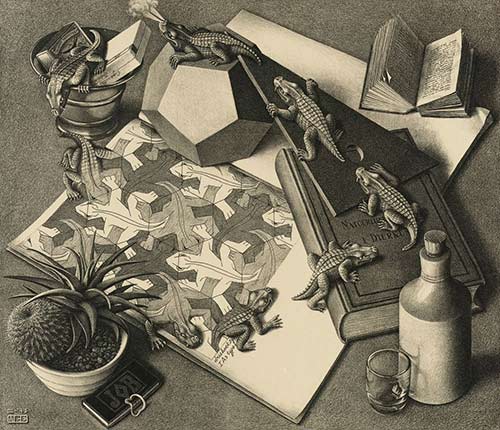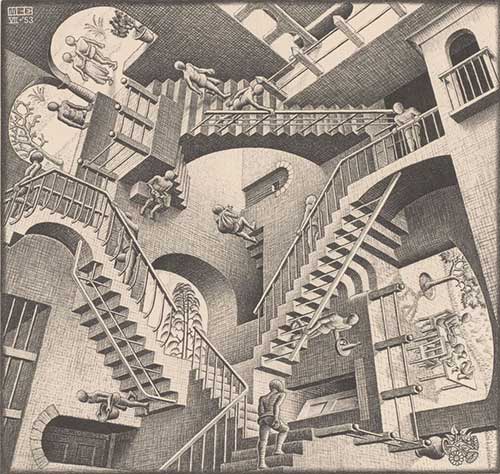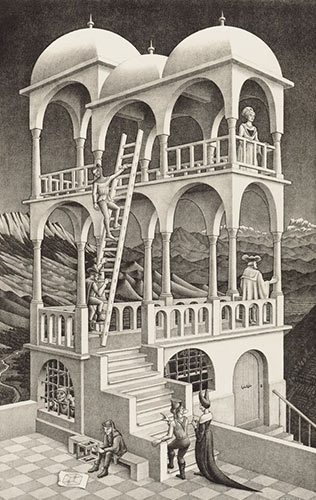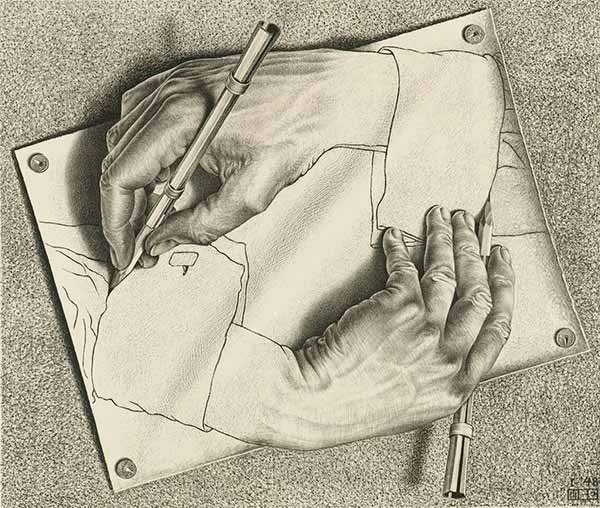Dulwich Picture Gallery in London is offering a rare glimpse into the life and career of one of the 20th century’s most acclaimed graphic artists and masters of illusion.
Known for his imaginative tessellations of birds, frogs, and lizards, and his impossible never-ending staircases and waterfalls, Dutch artist M.C. Escher (1898-1972) created some of the most popular images in modern art. The fascinating worlds Escher created in his drawings, lithographs, and woodcuts have proven to be timeless, appearing on the covers of albums and on the walls of countless teenagers’ bedrooms and college dormitories.

M.C. Escher, “Reptiles,” 1943, lithograph, 13 x 15 in. (c) Cordon Art-Baarn-the Netherlands 2015

M.C. Escher, “Relativity,” 1953, lithograph, 15 3/8 x 16 in. (c) Cordon Art-Baarn-the Netherlands 2015
Following its run at the Scottish National Gallery of Modern Art, “The Amazing World of M.C. Escher” has come to London’s Dulwich Picture Gallery, where it will remain through January 17. The exhibition is a rare opportunity to view the full range of Escher’s genius, complete with original drawings, iconic prints, lithographs, woodcuts, and “archive material that highlights his supreme skill as a master draughtsman with unparalleled technical ability,” as the gallery states.

M.C. Escher, “Day and Night,” 1938, woodcut, 15 7/16 x 26 5/8 in. (c) Cordon Art-Baarn-the Netherlands 2015
Over 100 works will feature in the exhibition and are arranged chronologically, spanning Escher’s career. The gallery continues, “Travel was hugely influential in the development of Escher’s work. He lived in Rome for 10 years, taking annual trips through various parts of Italy where, inspired by the mountainous scenery and picturesque towns and buildings, he created irregular perspectives, impossible in natural form. In ‘Still Life with Mirror’ (1934), for example, we see Escher using surreal illusion perhaps for the first time. When he moved to Switzerland in 1935 and then Belgium in 1938 he worked from images in his mind, rather than directly from observations. Escher focused on the concept of eternity in art — the subject of the well-known lithograph ‘Drawing Hands’ (1948).”

M.C. Escher, “Belvedere,” 1958, lithograph, 18 x 11 in. (c) Cordon Art-Baarn-the Netherlands 2015
To learn more, visit the Dulwich Picture Gallery.
This article was featured in Fine Art Today, a weekly e-newsletter from Fine Art Connoisseur magazine. To start receiving Fine Art Today for free, click here.








